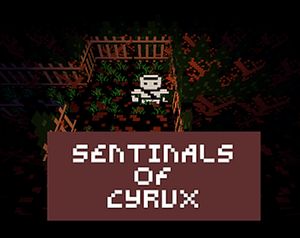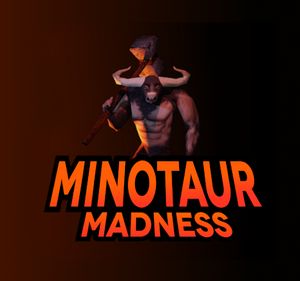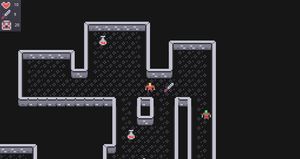
The History of the Fantasy Role-Playing Game (RPG)
Jun 2, 2020
For more than four decades gamers have been embarking on epic quests, acquiring magical items, battling against fierce supernatural foes and hauling massive bags of loot out of dungeon depths. But where did these themes originate? Why do they make for such compelling gameplay? Read on to explore the origins and history of the Fantasy Role-Playing Game (RPG).
Roots of the fantasy genre
Ancient literature and folklore
We can’t begin a discussion about the history of fantasy role-playing games without first taking a peek at the history of the fantasy or sword and sorcery genre in fiction and literature. Elements of magic and the supernatural have been prevalent throughout the history of storytelling. Examples of historic fantasy storytelling are prevalent in the European romances of chivalry such as King Arthur, tales such as Aladdin from the Arabian Nights, Greek and Norse mythology as well as European folklore, such as the tales collected by the Brothers Grimm. Themes from these works have all contributed to the modern fantasy genre and the fantasy role-playing game.
One of the oldest surviving examples of fantasy fiction is the Epic of Gilgamesh. This text encompasses classic RPG themes such as; setting off on epic quests, slaying mythical beasts and uncovering magical artifacts.
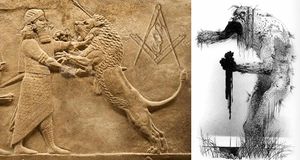
The Rise of Epic Fantasy in modern literature
The modern fantasy genre began in the early 1900s with the publication of fantasy fiction magazines such as Weird Tales. These magazines introduced us to characters such as Conan the Barbarian by Robert E. Howard who is regarded as the father of the sword and sorcery genre. However, it wasn’t until the 1950’s that the fantasy genre would be catapulted into the mainstream media.
In the 1950s J.R.R Tolkien published his epic fantasy trilogy The Lord of The Rings. Drawing inspiration from mythology, language and old English literature such as Beowulf, Tolkien’s work encompassed the idea of fantasy worlds, epic quests, and the ever raging battle between good and evil. The Lord of the Rings introduced modern audiences to the likes of Orcs, Elves, Dwarves, and in particular magical rings. Many or all of these themes are re-imagined in the fantasy role-playing genre.
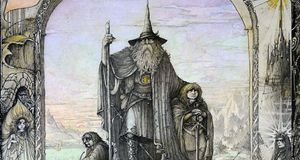
Role-playing what is it and where did it come from
So we have established the origins of the fantasy genre, but where does the term Role Playing come from? Role-playing at its core is a form of improvised theater and can trace its roots back to historical re-enactment. Participants collaborate and improvise a story with no predefined script or outcome for their characters. Role-playing games extend this with a formal system of rules that determine the outcomes of player actions.
Dungeons and Dragons and the Table-Top RPG
Dungeons and Dragons (D&D) is a fantasy tabletop role-playing game designed by Gary Gygax and Dave Arneson. First released in 1974, D&D is seen as the beginning of the roleplaying game as an industry.
Combining elements of storytelling and a structured system of rules to govern the outcomes of player actions, D&D sees groups of friends crowding around a table rolling strangely shaped dice. Players create their own characters and backstory before embarking on adventures under the guidance of a Dungeon Master (DM). The DM controls the flow of the story while players decide which actions to take in each scenario. The outcome of these actions is decided by a combination of dice throws and a character's attribute points.

Similar combinations of mathematical rules and a dice throw form the basis of computer RPG gameplay. For example, a combination of a players strength attribute, some attributes present on carried weapons and equipment combined with a randomly generated number will decide the final damage done if a player decides to attack an Orc.
All computer RPGs can trace their roots to D&D which has, in turn, spawned its own electronic variants such as Dungeons and Dragons Online, Neverwinter Nights, Baldur's Gate and many more.
The first Computer Role-Playing Games
Roguelikes
Although the first roguelike Beneath Apple Manor was released in 1978, it was the 1980 game Rogue which fathered this subgenre of RPG. Key Roguelike characteristics include ASCII graphics, randomly generated dungeon crawls, turn-based movement, and permanent death of the player's character.
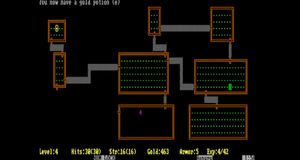
Roguelikes borrowed and expanded upon many mechanics from Dungeons and Dragons such as the selection of race, gender, and class, for the player's character. The player can then further customise their character through the allocation of attribute points. Like D&D Roguelikes feature experience points which can be acquired by defeating monsters, player levels allowing the player character to become more powerful and inventory systems for hauling all that epic loot.
Other notable Roguelikes of the era include Hack, NetHack, Angband and Moria each of which have their own derivatives and styles.
MUD, Multi-User Dungeon
Multi-User Dungeons or (MUD’s for short) are text-based, real-time, virtual worlds featuring multiplayer. Heralded as the forerunner of the Massively Multiplayer Online RPG (MMORPG) MUD’s often featured systems akin to their tabletop counterparts such as dice rolls, character progression, customisation, adventuring and slaying monsters. Role-playing is a central theme in many MUD’s. Due to their text-based nature, MUD’s were a prime place for interactive storytelling.
There are also graphical variants to the classic MUD. Before World of Warcraft popularised the term MMORPG this style of game was referred to as a Graphical Multi-User Dungeon. The still widely popular MMORPG RuneScape started life in 1999 as a game called DeviousMUD.
Graphical Computer Role-Playing Games
The Ultima Series
In June 1981 the first Ultima game was released, consisting of nine instalments the Ultima series is the first open-world RPG and is considered to be a major establisher of the computer role-playing game genre. The early games in the series featured a top-down world map view, one of the first examples of an overworld being used in a video game. The dungeon exploration segments deviated from this and used a first-person perspective, a feature which would be widely utilised throughout the dungeon crawling genre in games such as The Elder Scrolls series. The third instalment was one of the first video games to feature animated graphics and also introduced the concept of the player controlling a party of characters instead of an individual. Ultima 4 introduced an alignment system and moved away from the standard of allocating attribute points on character creation, the game instead asked the player a series of moral questions which determine their starting stats.
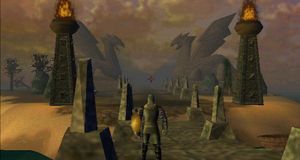
Ultima VII was renowned for the level of world interactivity, allowing the player to converse or attack NPC’s, as well as steal or pick up any item in the game world.
A spinoff to the Ultima series Ultima Online released in 1997 is one of the longest-running Massively Multiplayer Online Role-Playing Games (MMORPG). Ultima Online kept its open-world origins allowing players the freedom to play their characters as they wished and is the first Sandbox MMORPG.
Japanese Role-Playing Games (JRPG)
In 1997 Final Fantasy 7 was released and although it is the 7th in the series, it was this game that really catapulted the popularity of Japanese RPGs to a western audience.
Final Fantasy 7 is fondly recognised by gamers of the era as one of the greatest games of all time. The game featured many RPG staples such as an overworld (this time in 3d) and beautiful pre-rendered 3D towns and dungeons. The combat involved random encounters and turn-based combat featuring a party of characters. Each member of the party could be customised by equipping weapons with materia, magic stones which allowed the character to wield various spells and abilities in different combinations. The game was also famous for its epic storyline.
Japanese role-playing games are famous for their turn-based combat systems where the player controls a party of 3 to 4 (sometimes more) characters.
Diablo and the Action RPG
In 1997 the first Diablo hit the scene introducing the world to the action role-playing game genre. Diablo is recognised for its hack and slash gameplay and loot hoarding. It is also the first example of a graphical Roguelike, featuring randomly generated dungeons and equipment. However, purists would disagree as the game did away with permanent death and turn-based combat and instead opted for action-orientated gameplay.
Diablo also introduced us to a new type of inventory management, instead of relying on a combination of slots/weight limits, Diablo has a Tetris like inventory where different items have different size and shape, turning inventory management into a puzzle-like mini-game.
Open-World RPG’s and The Elder Scrolls Games
Although Ultima introduced us to the large open-world style of RPG it is the Elder Scrolls series that took it to the next level. The first Elder Scrolls game Arena was released in 1994 and drew inspiration from both pen and paper RPG’s as well as the Ultima games.
Arena is one of the first games to include a day-night cycle where shops will close after dark, a feature that would become synonymous with open-world RPG games. Arena’s game world was extremely large thanks to a combination of procedurally generated wilderness much like the randomly generated dungeons of Roguelikes from the past.
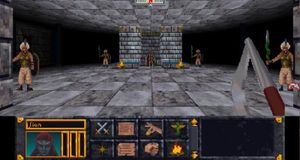
Daggerfall was released in 1996 and expanded on the player freedom found in Arena. Once again boasting a massive procedurally generated world, players could visit over 15,000 locations, create custom classes, join various guilds and transform into a werewolf.
Morrowind did away with the randomly generated world and instead opted for handcrafted locations. While this decreased the size of the game world it led to much greater detail and uniqueness to the different areas. Morrowind also opted for more player freedom by not focussing too strongly on the main questline.
Oblivion came out in 2006, it brought the focus back to a tighter storyline and more character development than in Morrowind.
Skyrim released in 2011 is probably the most widely known of the Elder Scrolls games. While boasting improved graphics the game did not bring anything new to the table and opted for Oblivions character and main storyline focus rather than Morrowind's open-ended nature. Skyrim has been released and re-released on almost any device containing a computer chip.
The Elder Scrolls series also contains various expansions spinoffs and an MMORPG.
Rise of the MMORPG
The concept of a multiplayer RPG dates all the way back to the 1980s. While not exactly massively multiplayer, Island of Kesmai allowed 6 players to play together in a virtual world. The game featured Roguelike ASCII graphics and a Dungeons & Dragons style turn-based combat system. The Island of Kesmai also introduced a questing system that would be used extensively in the Massively Multiplayer Online Role-Playing Game (MMORPG) genre.
Neverwinter Nights was the first graphical multiplayer RPG and was released in 1991. Originally allowing up to 50 players to join a server this number would increase to 500 by 1995. Much of Neverwinter Night’s popularity can be attributed to the player organised events run by creative guilds and individuals. These role-play events are a good example of the emergent game-play the MMORPG genre is famous for.
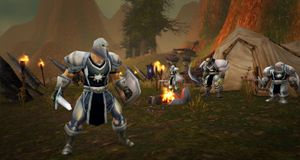
During the late 90s, the MMORPG continued to rise in popularity with games such as Meridian 59, Ultima Online, and the hugely addictive Everquest in 1999. However, it wasn’t until 2004 that MMORPGs would hit the mainstream with Blizzard entertainment's World of Warcraft.
Fantasy Role-Playing games in 2020 and beyond
In 2020 the Fantasy RPG is still one of the most popular genres of video games. Whether its skill trees or crafting, level ups or gear enhancements, RPGs have made their way into every other game genre. Triple-A studios are constantly raising the bar in terms of graphics and immersive worlds while indie developers are keeping the spirit of the classics alive, the next decade should be an exciting time for the adventure-seeking gamer.

